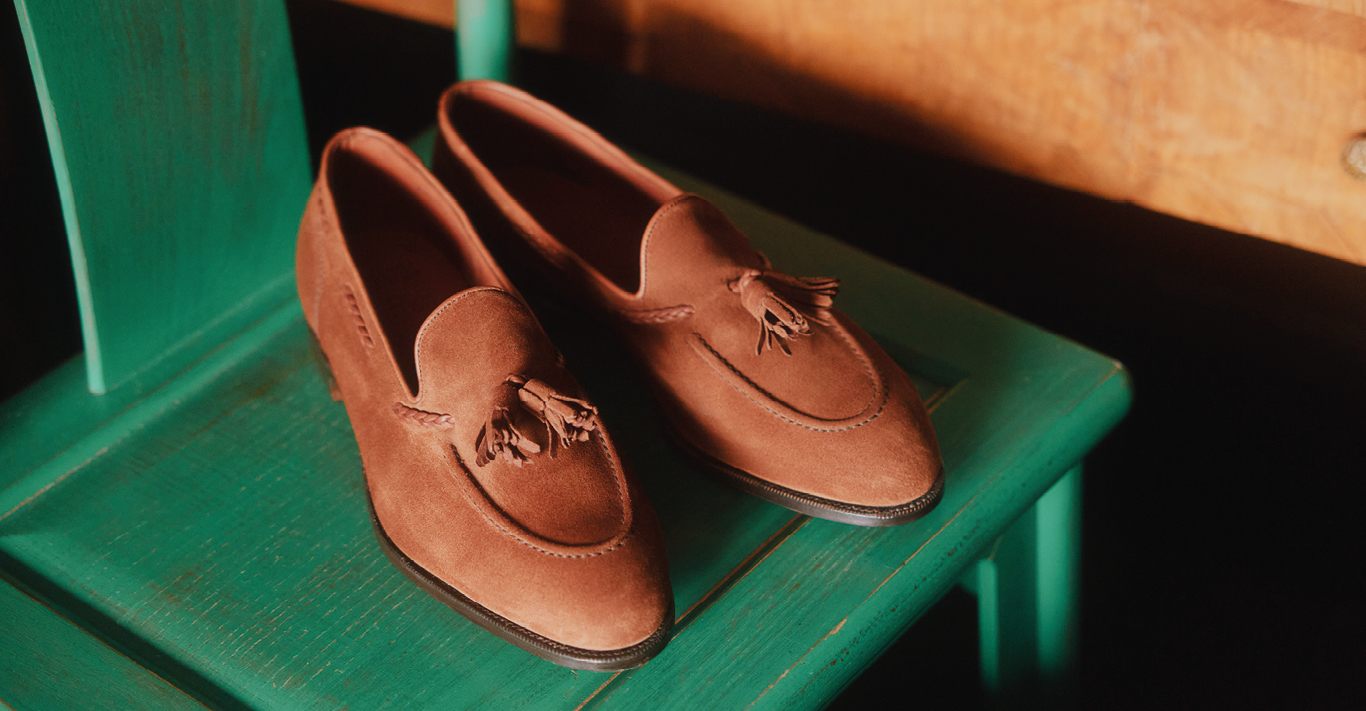WORDS
Antonino Biondo
The suit is dead. Long live the suit. In the past few years, men have radically changed the way they dress, especially when it comes to officewear. The growing need for comfort and casual, or at least toned-down classic formalwear has seen the rise of relaxed shapes and soft volumes. The traditional office suit had already shown signs of waning even before the pandemic. The Zuckerberg effect in Silicon Valley had already seen the relaxation of corporate dress codes in some spheres. Not to mention the advent of the digital nomads, a tribe of entrepreneurs, freelancers and corporate remote workers who travel to work in different locations, pursuing flexibility over a typical 9 to 5 schedule.
Nevertheless, it was the normalisation of working from home – unquestionably one of the biggest behavioural transformations in contemporary work culture – that exacerbated the decline of traditional officewear.
The rise of hybrid working conditions has undoubtedly changed our society, bringing along new habits and lifestyles. And a new fashion, too.
To meet the ever-changing consumer’s needs, the fast-paced fashion industry has quickly translated these transformations into a simplified and more laid-back aesthetic.
Softly tailored jackets, roomy shirts and wide-legged trousers have slowly replaced stiff and heavily constructed attire, on the runway as in the office. In their autumn/winter 22 collections, traditional formalwear brands such as Brioni, Zegna and Paul Smith have rethought their menswear codes, offering versatile and laid-back two-piece solutions, blurring the lines between workwear and off-duty outfits. Weightless unlined blazers are paired with knitted silky pyjamas trousers. Light blousons are worn underneath chore jackets, a new staple in the 3.0 men’s wardrobe. Tailoring meets sporting with a sophisticated take on utilitarian workwear, elegantly elevated with luxurious materials.
However, it’s worth remembering the roots of this process of simplification date to the 1970s. Pioneering Italian fashion designer and textile entrepreneur Nino Cerruti loosened up the rigorous codes of menswear, removing the lining from suits and playing with delicate fabrics. Following shortly after, his pupil Giorgio Armani introduced the revolutionary deconstructed blazer. Tearing apart its stiff shape and rigid pads, Armani crossed the border between formal and casual for the first time.
Unsurprisingly, this “wave of softening” has not been restricted to clothes. Unlined constructions and lighter materials have been widely adopted by premium footwear houses aligning with this contemporary shift. The Northampton-based shoe manufacturer Edward Green has recently added an unlined – or partially lined – range, including boots, derbies, and loafers to its collection of classics.
The tassel loafer Belgravia – named after one of the most exclusive postcodes in London, renowned for its Regency-era white stucco terraces – is the latest addition to Edward Green’s effortless staples.
‘What we’ve seen over recent years is that men’s working wardrobes are less structured – suits have made way for a jacket – often unlined, with softer shoulders – or no jacket at all. Materials are softer, too. And, naturally, shoes change with that – suedes are more popular than ever, and they go well with the khakis and Oxford shirt I often wear for work,’ explains Euan Denholm, Edward Green’s head of brand and business development.
Combining extra comfort with long-lasting quality, the reverse calf Belgravia is cut from younger and un-split skins, black and snuff suedes. The result is a versatile all-year-round shoe, which encapsulates high adaptability with an unmistakably English allure. ‘The Belgravia has proven its worth over time for me,’ says Simon Crompton, a long-time friend of Edward Green at menswear website Permanent Style. ‘It has simply become, subtly at first and now quite obviously, the shoe I wear the most. It goes with everything from white jeans to a flannel suit.’
Settled in the capital of shoe-making excellence with more than 130 years of history, Edward Green’s artisans take craftsmanship and innovation extremely seriously. They sew no more than 350 shoes together per week, using the traditional Goodyear welt, a hand-stitched process that ensures solid shape and structure even when using extra supple leather. If flexibility, breathability, and comfort seem to be the new men’s wardrobe leitmotif, Edward Green has certainly stepped in on the right foot.





